Balorian
Rising from the ashes of war, the Balorians value honour, courage, and family loyalty
As seen in
|
“Look around you, at our ‘great Empire’,” he said, swinging his arm around them as if they could see out across the vastness of the occupied systems from their armchairs. “The only reason that any of this exists at all—this library, this nation, this tobacco even—is because our Progenitors went far enough away from the elves that we could build ourselves up away from their hostile eyes. But we can’t stay confined to these small worlds forever. If our people are ever to be something more than barbarians, more than mere animals who know nothing but murder and theft, we must be sure that the elves know to fear our steel and our cannons. Especially the ones who fancy themselves as part of their ‘Imperial Navy’, since they take it upon themselves to police the stars against the ‘Orcish scourge’."More properly called Balôrrek in their own language when referring to themselves, or Balôrrĕn when referred to by others, the Balorians descend from the survivors of The Solstice Pact. They built their civilization, on a planet unknown to the Elves of the Avalonian Imperial Navy, over the roughly three hundred and fifty years since the First Interstellar War (IW1). This, they would tell you, is the key to their success -- the space to develop as a people, without being beaten down by the elves, just as their technology and governmental systems begin to realize their potential. Whether or not that is true, it cannot be denied that the Balorians are a sophisticated and complex people, who challenge many of the stereotypes that the Avalonian peoples and their allies hold towards orcs. The Balorians, who took their name from Balor, creator-god of the orcs, are the undisputed rulers and leaders of the Fomorian Empire. They have spent the past few centuries studying the lessons of the First Interstellar War -- and preparing for the Second.
A People Forged in War
Balorians were founded by a ship captain from the First Interstellar War (IW1) simply known as Elatha, and thirteen other leaders and ship captains who escaped destruction at the hands of the Avalonian Imperial Navy, along with their crews and families. With the elves hunting any Fomorian left in the void, they decided to take their chances on a recently-discovered wormhole that was unknown to the Avalonians. They found a hot and harsh planet, which they named Elatha, after their leader. Elatha turned out to be the center of a wormhole nexus which gave them access to a range of worlds mostly inhabited by other Fomorians, many of which were difficult for the elves to reach -- if they even knew they existed. The Balorian clans made their first homes in defensible mountain fortresses, and only spread to the lower elevations once those homes had been established. Guided by the words of Elatha, they began the long process of creating an infrastructure -- and an empire -- that would be able to withstand the onslaught of the Avalonians when they inevitably encountered them again. The Balorians, as a result, have spent much of their history as conquerors and colonial rulers. While their footprint has been heavy -- and in some cases, their rule has been harsh -- they believe that only uniting all the Fomorian peoples will give them a chance against the genocidal campaigns of the elves against their kind. Their entire culture exists to prepare for this conflict -- and that time has now come.Naming Traditions
Feminine names
Female Balorian names tend to celebrate strength, courage, and beauty. It is common for Balorian noblewomen to be named after distinguished female ancestors.
Examples: ᚪᛋᛏᚱᛁᛞ Astrid, ᛠ'ᚫᚾᛁᛞ Y'Anid, ᛖᚻᚲᚨ Ellka, ᛏᚨᛊᚨ Tasha, ᛏᚫᛨᚷᚨ Tarrga, ᚾᚨᚲᛠᚱᚨ Nakyra, ᛚᚪᚾᚨ Lana, ᚺᛖᛚᚷᚨ Helga, ᚷᚣᚱᛏᚨ Gurta, ᛏᚫᚲᚲᚨ Takka, ᚲᚪᛏᛠᚨ Katya, ᛒᚨᛊᚨ Basha, ᚫᚱᚲᚨ Arka
Balorian Female Name Generator
Randomly generate your own female Balorian names at the link above!Masculine names
Male Balorian names celebrate honour, courage, power and strength. It is common for Balorian noblemen to be named after distinguished male ancestors.
Examples: ᛞᛟᚱᛁᚾ Dorin, ᚲᛟᚱᛁᚾ Korin, ᚷᚣᚱᛏᚯᚲ Gurtok, ᛏᚫᚱᚵ Targg, ᚦᚫᛨ Tharr, ᛞᚫᚱᚷᚨ Darga, ᛒᛟᛚᚡᛇ Bolvi, ᛟᛚᚫᚠ Olaf, ᚦᛟᚱᚷᛁᚱ Thorgir, ᚲᛟᛨ Korr, ᛞᛟᚱᛁᚲ Dorik, ᛞᚥᚱᚷᚪᚲ Durgak
Balorian Male Name Generator
Randomly generate your own Balorian names at the link above!Unisex names
Because Balorians tend to view gender as a firm binary division, with specific roles in their society, unisex names are relatively rare.
Examples: ᚲᚪᚦᚨ Katha, ᚫᚱᚷᚨ Arga
Family names
Balorians who are part of a clan may use the clan name as their surname. For those who are loyal to a clan, but not part of a clan family, it is customary to use the clan name with a prefix that means "of."
Examples: Y'Anid Bloodfist, Bres Bloodaxe, Gurtok of the Clan Bloodfist
Other names
It is considered ill luck to name littermates after na'kórrek. It is viewed as tempting fate by dishonouring the uniqueness of the Na'korr bond. Balorians believe that siblings so named will be lifelong rivals, and possibly even enemies.
Culture
Major language groups and dialects
Balorians speak a complex form Orcish, which is more properly called Balôrrik. Because their empire includes, and depends on, a variety of Fomorian peoples, they also speak Goblinese, both major dialects of the Ogrish language, and many Trollish and Giant tongues. Most Balorians are also taught to speak Elvish -- the better to know their enemy.
Shared customary codes and values
Balorians are united by adherence to the Code of Elatha, which are guidelines of behaviour and values based on the prolific writings of Elatha. While there are broad and varying interpretations of the Code, all Balorian orcs seek to live by this Code as they understand it; or, for the unscrupulous, to manipulate it to their own selfish ends.
Average technological level
The Balorians have just entered the early Industrial Revolution. Starfaring technology is a foundational cornerstone of their culture. Their agricultural practices also represent significant adaptations to the climate of their harsh world: lowland wet crops such as rice are grown during the summer, and highland crops like peppers and quinoa are grown during the winter.
Common Dress code
It was fascinating to see Balorian portraits. They posed for the painters by looking sternly out from their frames, their arms often crossed in front of them or grasping large axes. They all seemed to be wearing their standard spiked brigandine armor—although all of these ones were in red, not black—and odd runes were prominently displayed on their gear. Many even had those runes carved into their tusks and gilded.Because climate varies between extremes on Elatha, Balorians dress with considerable differences between wet season and dry season, or summer and winter, clothing. They wear very little clothing in the hot summers, but bundle up for the winter season their high-altitude mountain homes. Balorians, like their ancestors, prefer leather, feathers, horns and bones in their clothing. Male Balorians often wear ceremonial brigandine armour as a sign of their rank, with their clan runes tooled into the besagues. It is customary for Balorian noblemen to etch their left tusk with the rune of the clan they were born into after completing their Zabbak'Tarr. They etch their right tusk with the rune of the clan they marry into after the nuptials are observed. They then gild these runes with liquid gold. How well they handle this is seen as a test of their strength. Hair and beards are styled in a wide variety of ways, but tend to be kept short or tied back in braids, so as to ease the wearing of helmets. Different clans tend to fancy different hair styles. Shaving one's head is not uncommon for older male orcs when they begin to lose their hair. Women's hair is worn long and loose for maidens, or styled into elaborate coiffures or braids for married women. Claws are almost universally grown long, if carefully groomed, and often enameled red, especially for Priestesses. Female Balorians do not gild their tusks. A wide variety of piercings, ritual scars, or tattoos, depending on profession or clan, are common to both genders. Earrings are especially common. Women wear elaborate jewels displaying their wealth and status, while men are usually starfaring sailors or marines, especially among nobles, and they wear two gold hoops -- traditionally worth enough to pay for their funeral.
Art & Architecture
Balorians are a technologically advanced people, entering the early Industrial Age. They are capable of constructing immense monuments and structures that will last for perhaps thousands of years. Their sense of the aesthetic, however, does not often make the sophistication of their art and architecture obvious at first glance. Like their ancestors, they prefer the look of bones, horns, furs, feathers, and predatory beasts. They build their works to incorporate these things, or to make it look as though they have.
Summer homes are constructed of wood and stone, and designed to keep things as cool as possible. Winter homes are deep mountain strongholds of elaborate cave systems. Both such homes incorporate access to starfaring ships right into the design, with harbours, airfields, and hangers. Balorians decorate extensively with sculpting, carving, and statuary in stone, marble, and bronze.
Music tends to be rhythmic rather than melodic, but the high eerie wails of the women, and the low throat chanting of the men, has entranced even the most jaded music critique. Their instruments tend to low drones and vibrations, with an emphasis on percussion. Balorians have developed opera, but their opera is nothing like opera among peoples more concerned with melody and tone.
All men are taught to drum; all women, to dance. Most family gatherings involve sharing in these activities, whether it is a funeral rite or a wedding celebration.
Common Customs, traditions and rituals
As the wife of the Heir, in the absence of a Clan Lady, Ynga lit a flame in a small brass brazier from the hearth fire, and gave it into Dorin’s enormous hand by its chain. “Clan Chief,” she recited, “it is time to return to the mountains, and live in retreat as our ancestors began. I give you the care of the fire of the Bloodfist Hearth. Guard it well.” He touched his fist to his forehead in symbolic reverence. “I accept and honour your charge, Priestess of the Den Mother,” he swore, “and I will guard this flame with my life.”Because the climate varies to extremes on Elatha, Balorians make a seasonal migration between summer homes in lower elevations during the dry season, and higher elevations in the wet season. Rituals have developed around this seasonal migration. All major possessions are symbolically removed (especially since the winter storms are capable of flooding and destroying summer residences.) The matriarch of the house takes the hearth fire and gives it into the care of the patriarch of the house for the migration, but she rekindles the hearth fire of the other residence when they arrive. At the autumn equinox, all Balorian nobles send representatives to the capital city, Holmgang, to pay their taxes and engage in the Equinox Games , where the males of the clan show off their athletic prowess and compete against one another for status. It is also traditional for all warriors who are capable of doing so to come home for the winter, to spend time with family. At the spring equinox, the Balorians return to Holmgang, where food is symbolically distributed to the populace by the High Chief, representing their feudal relationship and mutual obligations.
Birth & Baptismal Rites
When Balorian women give birth, it happens strictly in the presence of the household women. Men of the household are expected to wait nearby but not interfere. When children are born, the father and his immediate male family bring birthing gifts to the mother, and hold their children for the first time. Fathers name the boys, and mothers name the girls.
Coming of Age Rites
Male Balorians who come to the age of majority at 16 observe their Zabbak'Tarr, a coming-of-age ritual to prove their survival and hunting abilities. They are sent naked into the jungle, and must bring back something worthy for the clan to eat. By tradition, this is often a large, predatory beast, such as one of the many giant reptiles that are native to Elatha.
Female Balorians, upon their first menses, go to the Island of the Mother to observe their yiich mês (First Blood) ritual. While this officially marks the beginning of their adulthood, it is traditional to wait a few years before marriage, letting the young women have time to grow into their maturity.
Common Taboos
One never, ever, brings harm to a priestess of the Den Mother. Doing so invites the wrath of gods and men upon the perpetrator, and such a person, if they survive the experience, can never show their face in civilized company again. Most clans extend this to encompass all women -- although there are notable exceptions.
Accepting food from another's table is symbolic of a bond of service. The giver of the food owes all the obligations of noblesse oblige, and the taker of the food serves them to the best of their ability in whatever capacity is agreed upon.
If disagreements can't be resolved with negotiation, they are resolved by formalized combat. This extends from personal arguments to significant changes of political leadership.
Common Myths and Legends
- The Exodus of Elatha
- The Vengeance of Katya
Historical figures
- Elatha
- Hrutta Bloodaxe
- Tashaka Bloodfist
- Katya Icefell
- Grokka Doomspear
- Korr Bloodfist
- Urgoth Bloodaxe
- Bres Bloodaxe
Ideals
Beauty Ideals
Male Balorians are expected to be strong and fit. Large tusks are considered to be indicative of large... other parts, though of course, there is no evidence there is actually a correlation. Hygiene is essential, since male orcs produce a lot of testosterone and therefore, tend to strong body odours if they are not vigilant about their cleanliness. Claws and tusks are expected to be neatly groomed, and tusks are often elaborately decorated.
Female Balorians are considered to be beautiful when they display obvious "feminine" qualities. Shapely curves, small tusks, and soft skin are considered attractive features to male Balorians. There are some who have a bit of a fetish for tiny women, since female orcs are smaller on average than male orcs.
Gender Ideals
The ladies left early to make lunch. Shaundar asked the instructor, “Karr, doesn’t that mean that our female marines are missing out on important training?” “They’re getting other training that’s equally important, Gor’tar,” Kael informed him. “That’s the closest Fomorian rank to ‘Lieutanent,’ by the way. Balorian women are expected to know how to care for a household, and many of our soldiers don’t, so they need the practice.” Shaundar thought ruefully of the pepper salad yesterday. “Gul, karr.”

Tashaka Bloodfist by digitalstorm
Courtship Ideals
Marriages within Balorian clans, especially among Balorian nobles, are usually arranged to solidify alliances between the clans. The males of the family propose the arrangements, but it is the matriarch of the clan who must give her final approval. It is expected that powerful men will have multiple wives.
These marriages can be quite complex, however, because clan lineage is traced through the matrilineal line. Males must either be the child, or the spouse, of a woman of the clan to be considered a clan member. It is not uncommon for cousins to marry as a result.
However, the Balorians also have an expanded definition of "sibling," likely due, in part, to this custom. The tradition of Na'korr, a "blood brother" ritual, officially makes another warrior into one's brother in Balorian society. And once the primary marriage is made, women from other clans may be brought into the family, and are considered to be full clan members, especially for this purpose.
Relationship Ideals
Devotion to one's spouse is expected and encouraged for both genders, and Balorian marriages are filled with genuine love more often than not, despite the fact that they are usually arranged.
That love and devotion doesn't necessarily extend to fidelity, however. Balorian men often have sexual liaisons with women who are not their wives, especially within the context of the work of the Sisterhood of the Den Mother. The resulting children are not considered part of the clan unless their father challenges the Clan Champion for their recognition, although most fathers take their obligations to their children seriously, and see that they are well taken care of.
Nor is it uncommon for Balorian women to have sexual and romantic relationships with their sister-wives, or even to take girlfriends to their beds. This is broadly accepted and carries no stigma.
Any whiff of homosexuality among men, however, is strongly discouraged, and if such a relationship is discovered, it is met with social condemnation and derision.
Don't forget that you can click on the blue compass on the left to access the Table of Contents at any time!
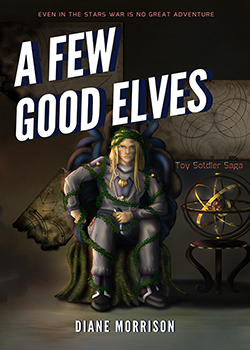
Want to read all of the Toy Soldier Saga fiction, even before the rest of the world does?Subscribe now!
Balorian Clans
Among the Balorians, family is everything. Loyalty to one's family permits even acts that other cultures might view as treasonous or outright evil. While there are many Balorian clans, there are only 13 Great Clans of Balorians. Each one is a dynasty in its own right, controlling nations or even worlds. They are either the descendants of The Thirteen , the surviving orcish leaders of the armed forces of The Solstice Pact, or clans that ascended to their position when a vacancy opened. Each clan, commanding such influence, could be considered an ethnic group in its own right, since it has such power and influence over broad groups of people. Make no mistake: the titles of their leaders might be Clan Chief, Clan Lady, and Clan Champion, but they are kings and queens in their own right.Child before Na'korr. Na'korr before spouse. Spouse before clan. Clan before all else.
The Five Original Clans
There are five clans that remain who are directly descended from the Thirteen. They are:- Clan Bloodaxe
- Clan Bloodfist
- Clan Doomspear
- Clan Ironlaw
- Clan One-Eye
The Other Great Clans
Eight other clans are also counted among the Great Clans:- Clan Baneblood
- Clan Deathtusk
- Clan Grimcleave
- Clan Ironguard
- Clan Reaver
- Clan Rageclaw
- Clan Starstrike
- Clan Stoneheart
Encompassed species
Related Organizations
Related Items
Languages spoken
Related Locations

Let Me Take the War Out of You by Sable Aradia
The Works of Elatha
Elatha was not only a strategist and politician, he was a philosopher, a sociologist, and a prolific writer.
He left 13 volumes of his work behind, ranging from A Balorian Manifesto, in which he laid out his plan for the Balorian people and their millennia-old struggle against the elves; to The Art of War, which is an essential guidebook on strategy and warrior ethics; to Ethics, in which he delineated a code of behaviour by which he believed an orc should live.
The Works of Elatha are a cornerstone of Balorian culture, from their legal system to their social behaviour. Balorians quote from these works frequently, and even use abbreviated catchphrases that everyone understands in common conversation -- though of course, every clan and every individual Balorian has their own interpretation of the true intentions behind Elatha's words.
“’Elatha?’” Shaundar repeated curiously. “Elatha was the founder of our people,” he explained, “the one who taught us to be more than common orcs. It is said that he was the son of Balor.” He hesitated and then asked, “You do know who Balor is, don’t you?” Shaundar nodded. “Elatha was a writer and a scholar,” Dorin Bloodfist continued. “Most Balorians cite his earliest work, ‘A Balorian Manifesto,’ but I am rather fond of his last book, ‘The Art of War.’ It is not dissimilar from your ‘Song of the Blade,’ I think. He wrote, ‘Understand your enemy as if you were wearing his skin. Learn what drives him, why he fights and what he believes in. Then you will understand what it is that he believes is worth dying for. Only then will you be able to achieve true victory.’” “I fight to defend my home, my family and my people.” He smiled, and this time, Shaundar could tell it was a smile. “Don’t we all, lad. Don’t we all.”
A Balorian's Honour
His mouth thinned into a line around the tusks. “A Balorian’s honour is bound up in his armour and his axe. I know there’s no chance of getting my axe—relax, boy, I wasn’t asking—but the armour is a symbol of my clan. I suppose it’s somewhat like your elven Houses, Shaundar Sunfall.” Shaundar pursed his lips. This sounded to him like a trick to improve the orc’s lot so that he was in a better position should he make an escape attempt. “The armour is covered in spikes and studs,” he pointed out. “It would make a good weapon. I don’t think we should allow that, begging your pardon, sir.” Dorin Bloodfist sighed. “I give you my word of honour, harak’cha, that I will not try to escape while in your custody. Or that of your blood brother, either.” His gaze was intense. Shaundar looked carefully into his eyes and saw only sincerity. He nodded slowly. “I believe you,” he said. “I’ll ask as soon as my shift is done.”





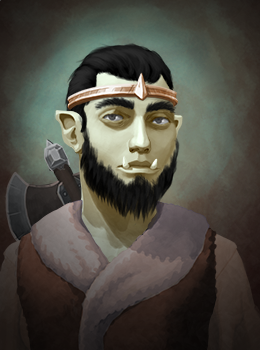
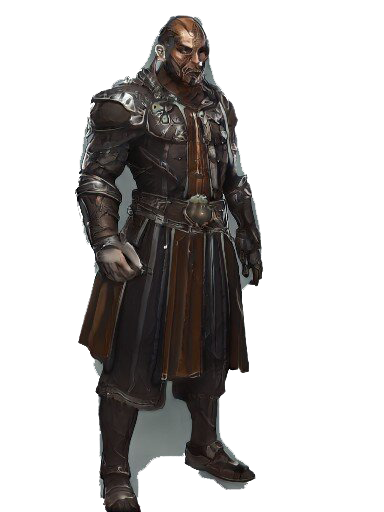




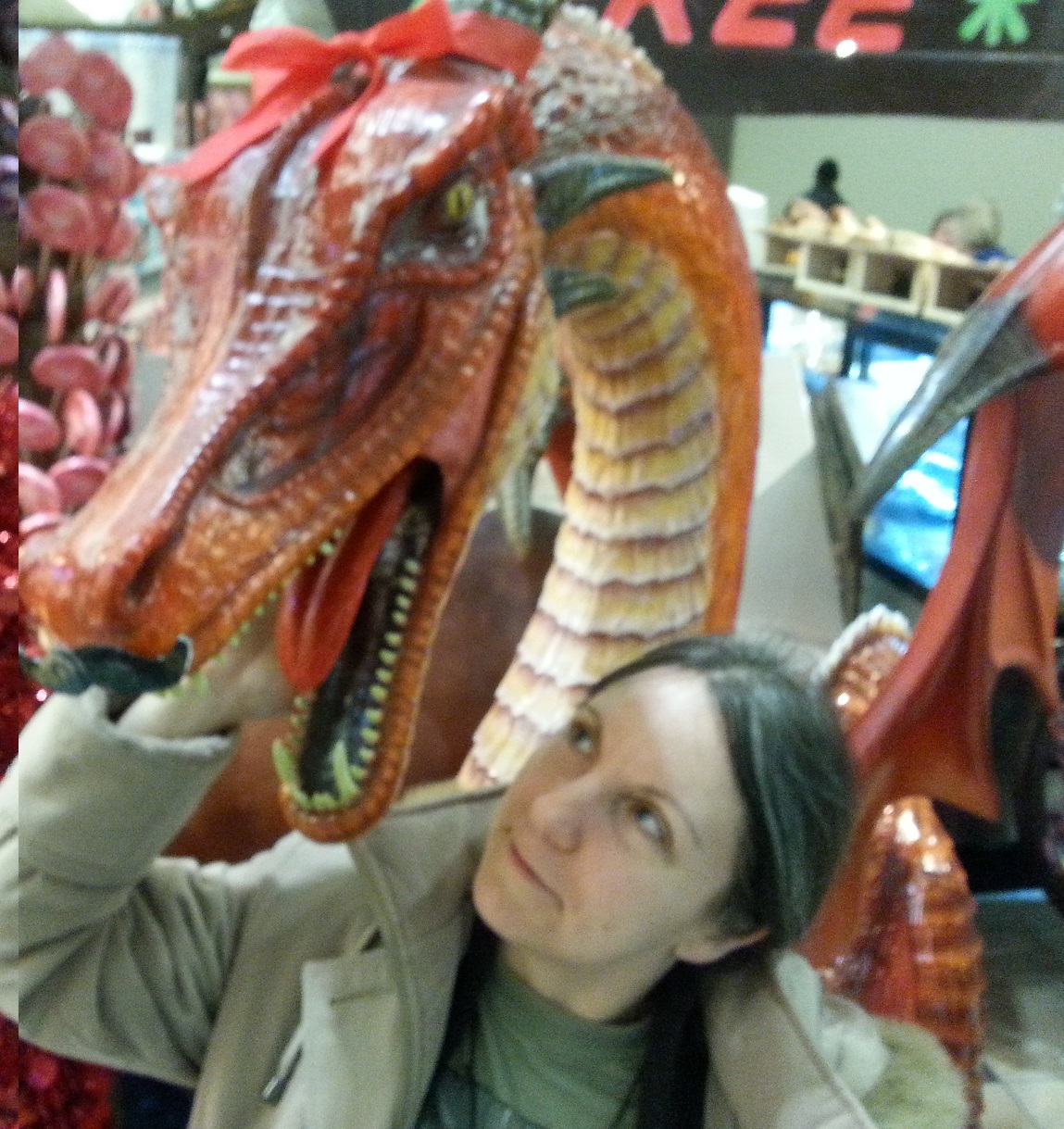

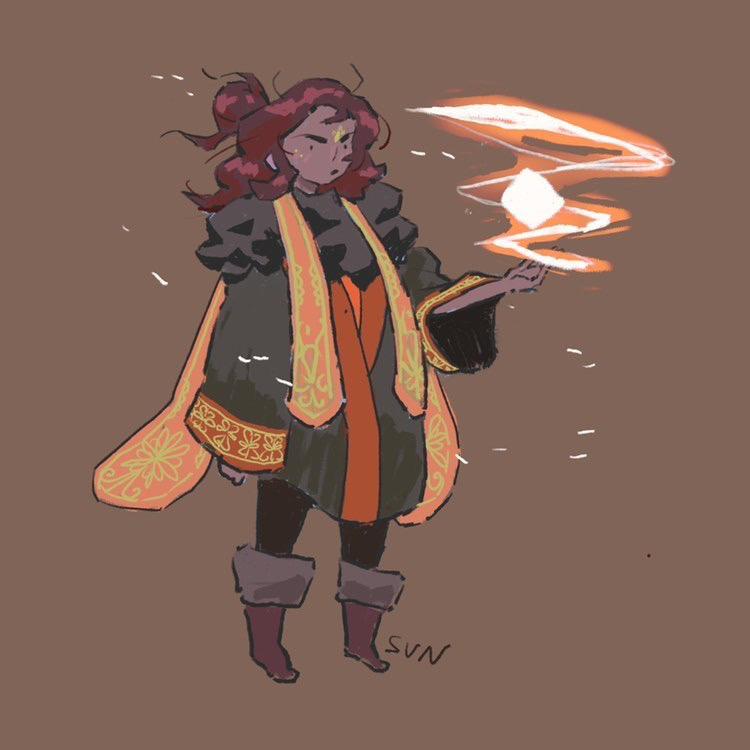
This is one of my favorite articles for a species. I love that I can generate my own name and that it has such clear cultural richness throughout. Well done!
Thanks so much, Esong! My protagonist in the Toy Soldier Saga interacts extensively with Balorian culture. The challenge wasn't coming up with stuff to write - the challenge was trying to choose the key details that best captures who they are and what they are about. :) I have a lot of affection for them!